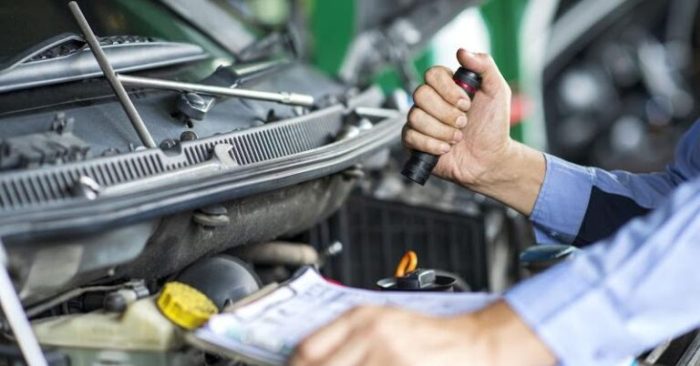Common car problems and solutions sets the stage for an engaging exploration of the key issues that every car owner may encounter. Understanding these common challenges is essential for maintaining vehicle performance and safety. From engine troubles to tire issues, this guide will equip you with the knowledge needed to diagnose and effectively address car problems, ensuring a smoother and safer ride.
Obtain direct knowledge about the efficiency of Best Mazda sports cars through case studies.
In this comprehensive overview, we will delve into the most frequent car problems faced by drivers, highlighting their symptoms and practical solutions. Whether you’re grappling with transmission troubles or cooling system concerns, being informed can save you time and money while enhancing your driving experience.
Examine how Track-ready sports cars 2024 can boost performance in your area.
Common Engine Issues
The engine is the heart of any vehicle, and problems can lead to serious performance issues. Understanding common engine problems and their symptoms can help car owners take preventative measures or seek timely repairs.
Typical Engine Problems
Engine problems can manifest in various ways. Common issues include overheating, misfires, and rough idling. These issues can lead to decreased performance and increased repair costs if not addressed promptly.
Engine Overheating Symptoms and Solutions
Overheating is a critical issue that can damage engine components. Symptoms may include a temperature gauge reading in the red zone, steam rising from the engine compartment, or a sweet smell of coolant. To address this, check for coolant leaks, ensure the radiator is functioning properly, and verify that the thermostat is not stuck.
Diagnosing Engine Misfires and Rough Idling
Misfires and rough idling can indicate several underlying issues such as faulty spark plugs or fuel injectors. Signs include a rough or shaky idle and a decrease in acceleration. To diagnose, check the spark plugs for wear, inspect the ignition coils, and evaluate the fuel system. Regular maintenance can prevent these issues from arising.
Transmission Troubles
Transmission problems can severely affect a vehicle’s drivability. Recognizing the signs early on can help prevent costly repairs or replacements.
Common Transmission Problems and Their Signs
Transmission issues often manifest as slipping gears, delayed engagement, or unusual noises. These signs indicate that the transmission may require immediate attention to avoid further damage.
Steps for Shifting Issues
If a vehicle is experiencing shifting problems, it is crucial to check the transmission fluid level. Low fluid can lead to shifting difficulties. Additionally, inspect for leaks around the transmission area.
Checking Transmission Fluid Levels
To assess transmission fluid, park on a flat surface, warm up the engine, and then check the dipstick. The fluid should be a bright red color and have a sweet smell. Dark or burnt fluid indicates a need for a flush or replacement.
Brake System Failures
The brake system is essential for vehicle safety, and recognizing its failure signs is vital for preventing accidents.
Signs of Worn Brake Pads and Replacement Timing
Worn brake pads typically produce squeaking or grinding noises when in use. Other signs include a soft brake pedal or vibrations during braking. Replace brake pads every 30,000 to 70,000 miles, depending on driving habits.
Checking Brake Fluid Levels and Quality
Brake fluid should be clear and at the appropriate level. To check, locate the brake fluid reservoir under the hood. If it’s low, top it up with the recommended fluid type. If the fluid appears dark or contaminated, it should be replaced.
Impact of Brake System Issues on Vehicle Safety
Neglecting brake system problems can lead to brake failure, which is a significant safety hazard. Regular inspections and timely repairs are crucial for maintaining safe braking performance.
Electrical System Problems: Common Car Problems And Solutions
The electrical system is integral to modern vehicles, powering everything from the ignition system to interior lights.
Symptoms of a Failing Car Battery
A failing battery may exhibit symptoms like dimming headlights, slow engine cranking, or warning lights on the dashboard. Regular testing and replacement can prevent unexpected breakdowns.
Troubleshooting Electrical Issues

Flickering lights could indicate a battery or alternator issue. To troubleshoot, check the battery connections for corrosion and ensure the alternator is functioning correctly.
Importance of Fuses and Checking for Blown Fuses
Fuses protect electrical components from overloads. Regularly checking fuses can prevent electrical failures. If a fuse is blown, replace it with one of the same amperage to restore function.
Tire and Suspension Issues
Tire and suspension problems can lead to unsafe driving conditions. Regular maintenance is crucial for ensuring optimal vehicle performance.
Common Tire Problems
Tire issues include uneven wear, low air pressure, and bulges. Regularly check tire pressure and tread depth to ensure safe driving conditions.
Signs of Suspension Problems
Suspension problems may present as excessive bouncing, uneven tire wear, or difficulty steering. Addressing these signs can prevent further damage to the vehicle.
Checklist for Tire Maintenance
– Regularly check tire pressure.
– Inspect tread depth for even wear.
– Rotate tires every 5,000 to 7,500 miles.
– Check for signs of damage or bulging.
Cooling System Concerns
The cooling system is essential for maintaining engine temperature and preventing overheating.
Common Cooling System Leaks
Leaks can occur in hoses, the radiator, or the water pump. Signs include coolant puddles under the vehicle or a sweet smell. Regular inspections can identify potential issues before they become severe.
Maintaining the Cooling System
To maintain the cooling system, regularly check coolant levels, inspect hoses for wear, and flush the system according to the manufacturer’s recommendations.
Significance of the Thermostat
The thermostat regulates engine temperature. A malfunctioning thermostat can lead to overheating or underheating, affecting performance. Regular checks are necessary to ensure proper function.
Fuel System Problems
The fuel system is crucial for engine operation, and its issues can lead to performance loss.
Symptoms of a Clogged Fuel Filter
A clogged fuel filter can cause engine stalling, reduced power, and difficulty starting. Regular replacement of the fuel filter is essential for optimal engine function.
Importance of Fuel Injectors
Fuel injectors deliver fuel to the engine. Dirty injectors can lead to poor engine performance. Cleaning injectors can restore functionality and improve efficiency.
Diagnosing Fuel Pump Failures, Common car problems and solutions
Symptoms of a failing fuel pump include engine sputtering, loss of power, and difficulty starting. Testing fuel pressure can determine if the pump is functioning properly.
Exhaust System Issues

A healthy exhaust system is essential for reducing emissions and ensuring vehicle efficiency.
Signs of Exhaust Leaks

Exhaust leaks may produce a loud noise, smell of exhaust fumes inside the vehicle, or decreased fuel efficiency. Addressing leaks promptly can prevent further environmental impact and ensure vehicle safety.
Checking for Catalytic Converter Problems
A faulty catalytic converter may lead to poor engine performance and increased emissions. Signs include decreased fuel efficiency and a check engine light. Regular inspections can help identify issues early.
Maintaining a Healthy Exhaust System
To maintain the exhaust system, regularly check for leaks, ensure the exhaust is securely mounted, and follow emission standards. This helps in reducing harmful emissions and improving vehicle performance.
Final Review
In conclusion, recognizing and addressing common car problems can significantly prolong the life of your vehicle and enhance safety on the road. By staying proactive and informed about potential issues, you can tackle problems before they escalate. Remember, regular maintenance and timely repairs are key to keeping your car in optimal condition, allowing you to drive with confidence and peace of mind.